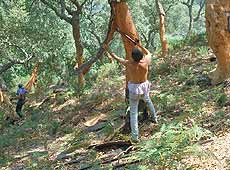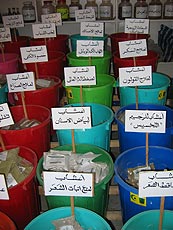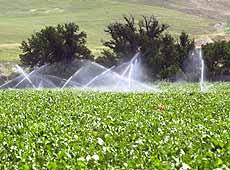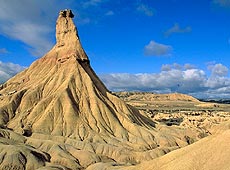|
Sustainable use of natural resources
The
Mediterranean region is identified
on the basis of its common history
and culture, by its common geography
and ecological characteristics
and by the enclosed nature of
the shared sea. This "Mare
Nostrum" has been the basis
for concerted policies and actions
in the region over the last
30 years.

The
Mediterranean-rim countries
hold around 400 million people,
and 135 million of them live
on the Mediterranean coast.
The high levels of urbanisation
and industrialization along
its shores and rivers have long
made it sensitive to profound
environmental change.

This migration towards coastal
areas, and specifically in the
south and east of the Mediterranean,
is causing a pressure on the
coastal environment, and more
importantly on its
biodiversity.
The
GDP per capita of the Mediterranean
EU countries is twelve times
that of their North African
counterparts, and population
growth and slow-growing economies
make legal or illegal immigration
to the EU an attractive prospect
for many as well as providing
temporary jobs especially in
the agricultural sector. All
in all, the Mediterranean natural
resources are under a huge pressured.
Forests
Mediterranean
forests provide a wide range
of important benefits and services
to society that go far beyond
traditional forest products.
Furthermore, they represent
one of the planet's important
centres of plant diversity,
with an estimated 25,000 species
of plant which around half are
endemic. The forests are now
fragile and under threat. Agricultural
intensification, fires, over-grazing,
and climate change are some
of the major threats to Mediterranean
forests and have helped lead
to forest loss and degradation
in many countries over the past
several decades.

Fisheries
Fisheries
involve some 120 commercial
species and an annual catch
of 1.1 million tonnes per year
- recent trends have threatened
stocks of swordfish and tuna,
and increasingly riparian countries
struggle to maintain artisanal
fisheries of local economic
and cultural importance. Aquaculture
in the region fails to fill
the gap between annual catches
and consumption in riparian
states (4 million tonnes per
year), and sustainability of
fisheries is rapidly becoming
a major concern.

For
many countries, water resources
are a key issue, except perhaps
in the more water-rich Balkans,
and the global debate on water
finds a voice in the Mediterranean
region. By the year 2025 the
Blue Plan estimates that 10
of the 12 countries may be consuming
more than 50 per cent of their
renewable water resources, with
eight of then using more than
100% . Some 70 % of Mediterranean
water is used for agriculture,
much of it for consumption within
Europe. Many wetlands have been
lost through drainage and diversion
(eg. 65% in Greece, 28% in Tunisia).
|